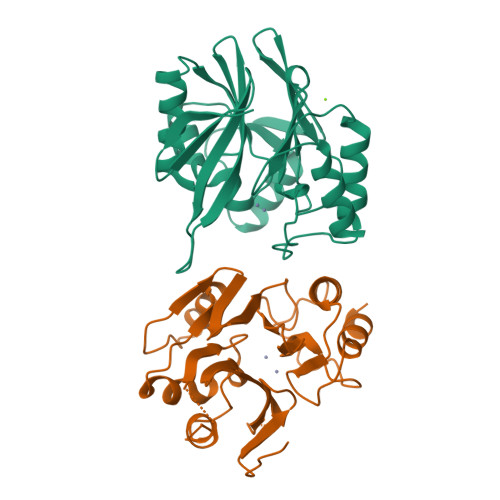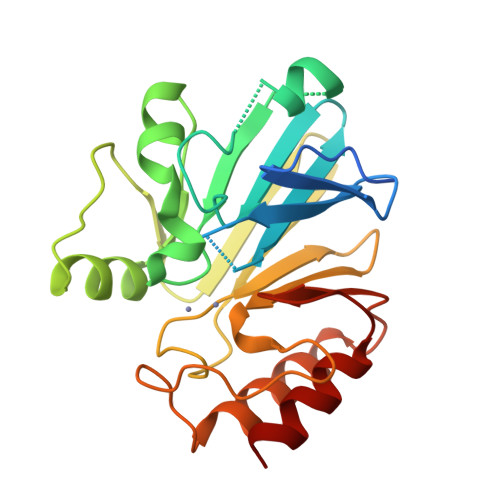Structural and biochemical characterization of the environmental MBLs MYO-1, ECV-1 and SHD-1.
Frohlich, C., Sorum, V., Huber, S., Samuelsen, O., Berglund, F., Kristiansson, E., Kotsakis, S.D., Marathe, N.P., Larsson, D.G.J., Leiros, H.S.(2020) J Antimicrob Chemother 75: 2554-2563
- PubMed: 32464640
- DOI: https://doi.org/10.1093/jac/dkaa175
- Primary Citation of Related Structures:
6T5K, 6T5L - PubMed Abstract:
MBLs form a large and heterogeneous group of bacterial enzymes conferring resistance to β-lactam antibiotics, including carbapenems. A large environmental reservoir of MBLs has been identified, which can act as a source for transfer into human pathogens. Therefore, structural investigation of environmental and clinically rare MBLs can give new insights into structure-activity relationships to explore the role of catalytic and second shell residues, which are under selective pressure. To investigate the structure and activity of the environmental subclass B1 MBLs MYO-1, SHD-1 and ECV-1. The respective genes of these MBLs were cloned into vectors and expressed in Escherichia coli. Purified enzymes were characterized with respect to their catalytic efficiency (kcat/Km). The enzymatic activities and MICs were determined for a panel of different β-lactams, including penicillins, cephalosporins and carbapenems. Thermostability was measured and structures were solved using X-ray crystallography (MYO-1 and ECV-1) or generated by homology modelling (SHD-1). Expression of the environmental MBLs in E. coli resulted in the characteristic MBL profile, not affecting aztreonam susceptibility and decreasing susceptibility to carbapenems, cephalosporins and penicillins. The purified enzymes showed variable catalytic activity in the order of <5% to ∼70% compared with the clinically widespread NDM-1. The thermostability of ECV-1 and SHD-1 was up to 8°C higher than that of MYO-1 and NDM-1. Using solved structures and molecular modelling, we identified differences in their second shell composition, possibly responsible for their relatively low hydrolytic activity. These results show the importance of environmental species acting as reservoirs for MBL-encoding genes.
Organizational Affiliation:
The Norwegian Structural Biology Centre (NorStruct), Department of Chemistry, UiT The Arctic University of Norway, Tromsø, Norway.



















